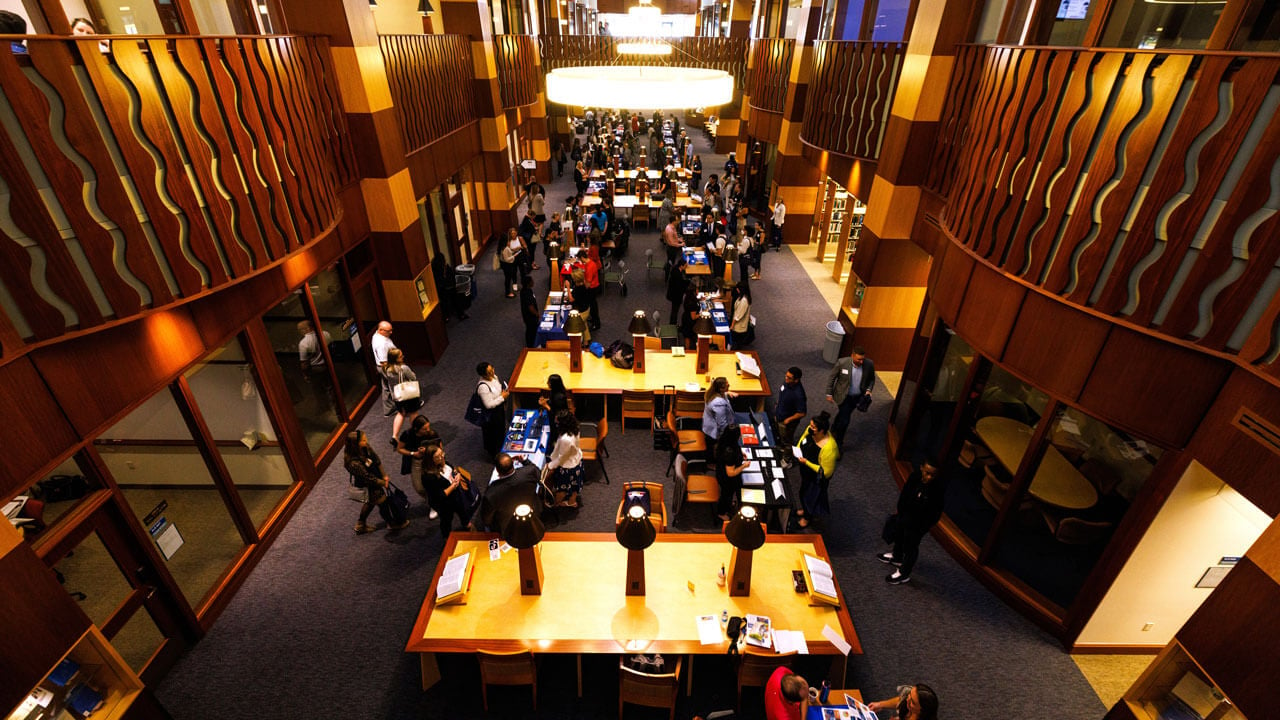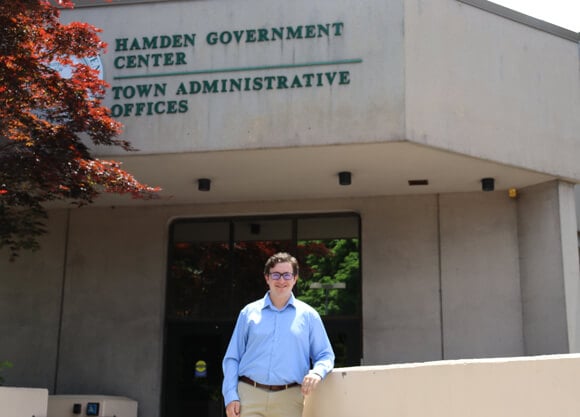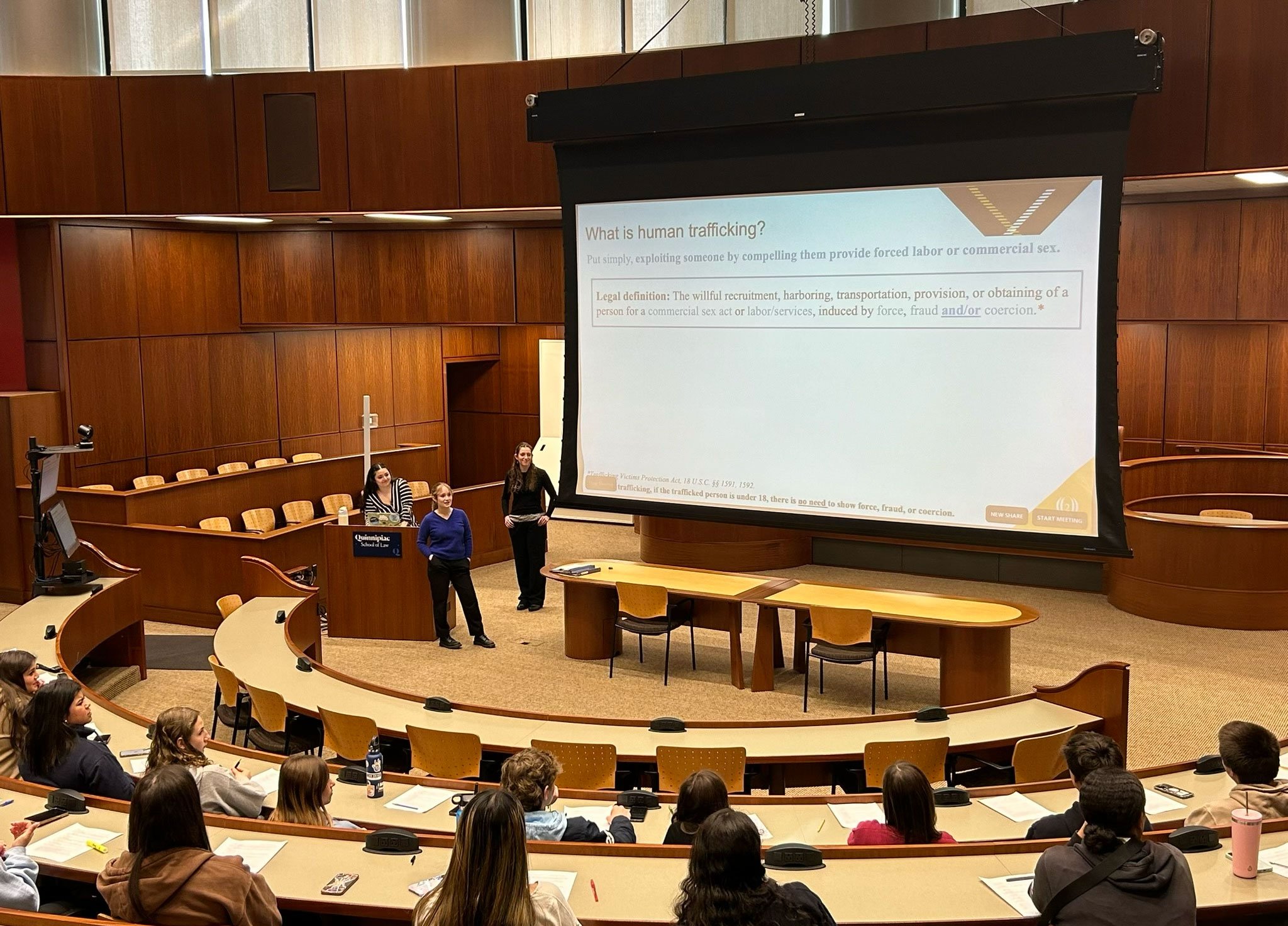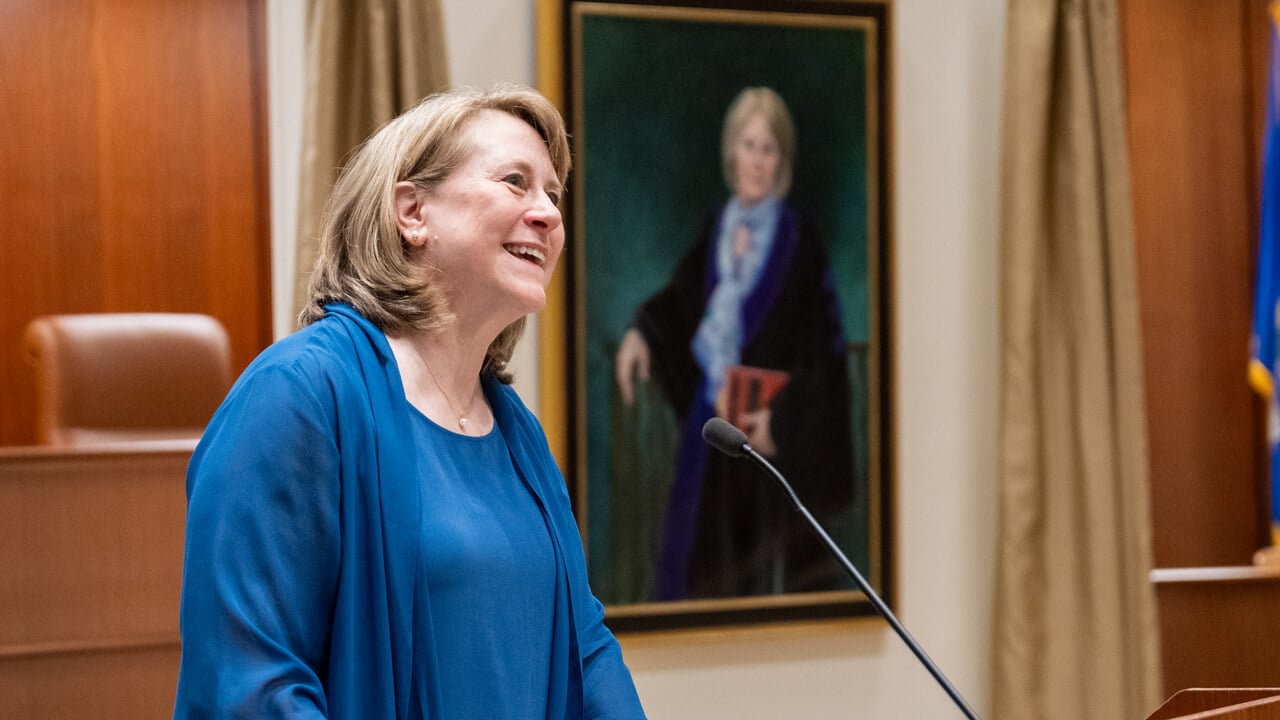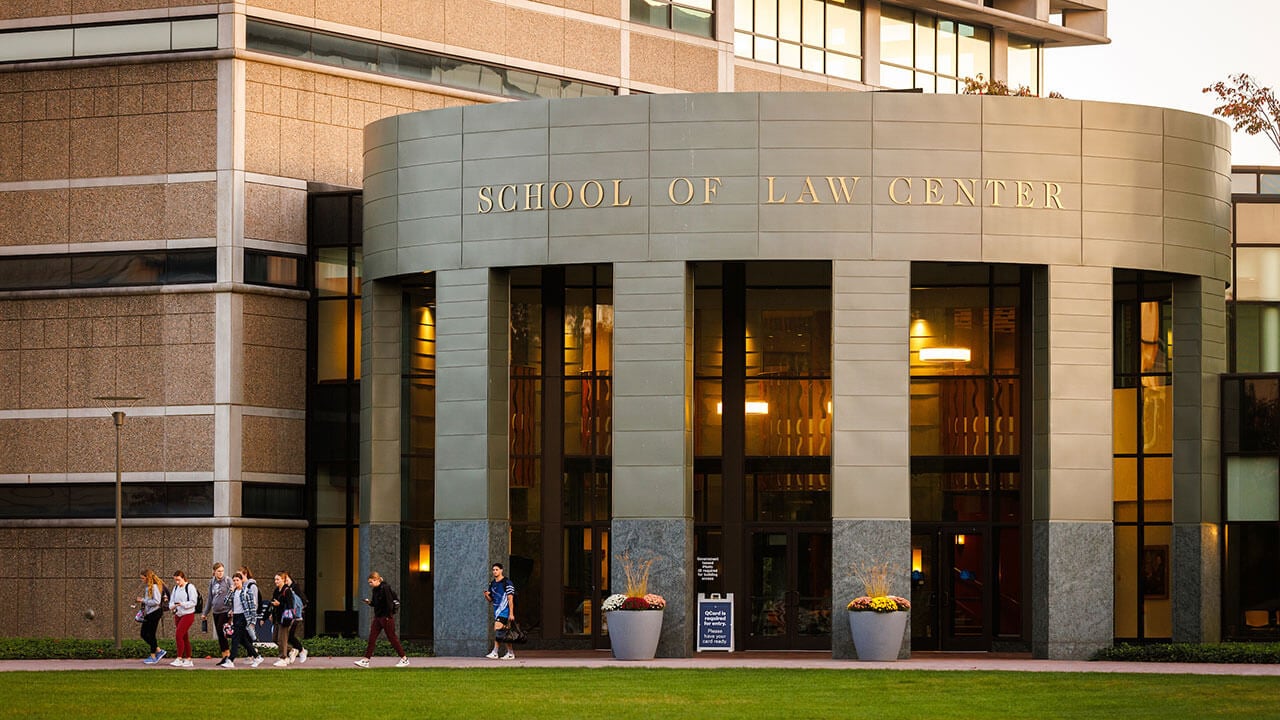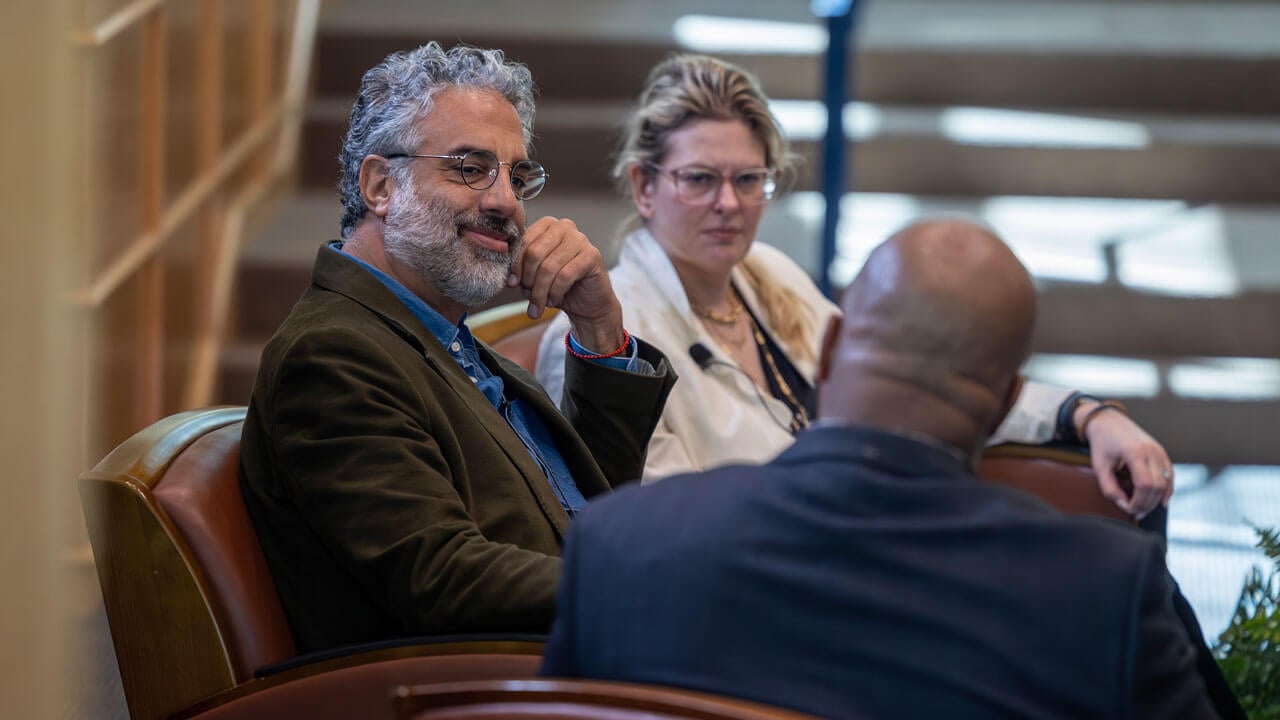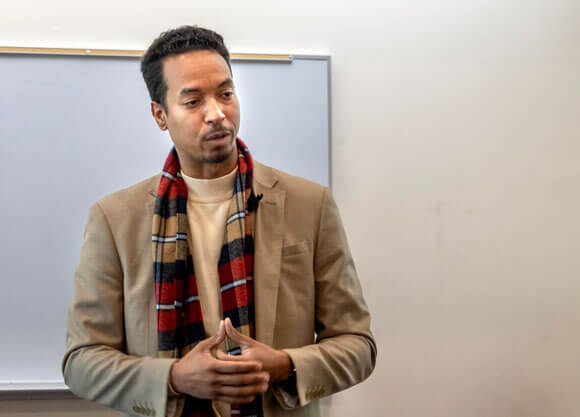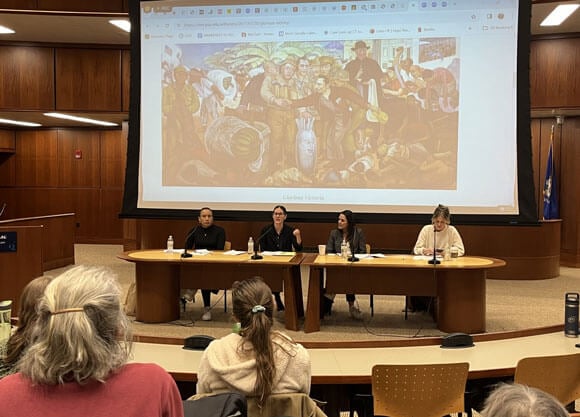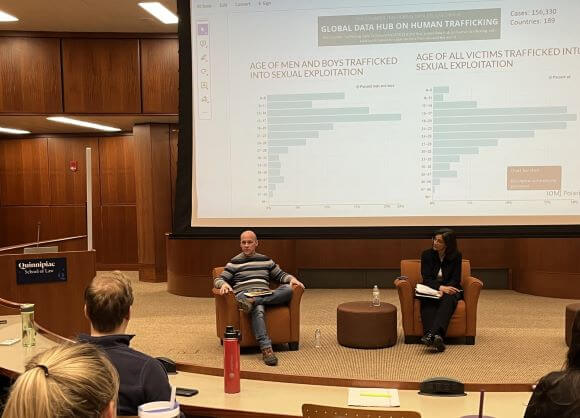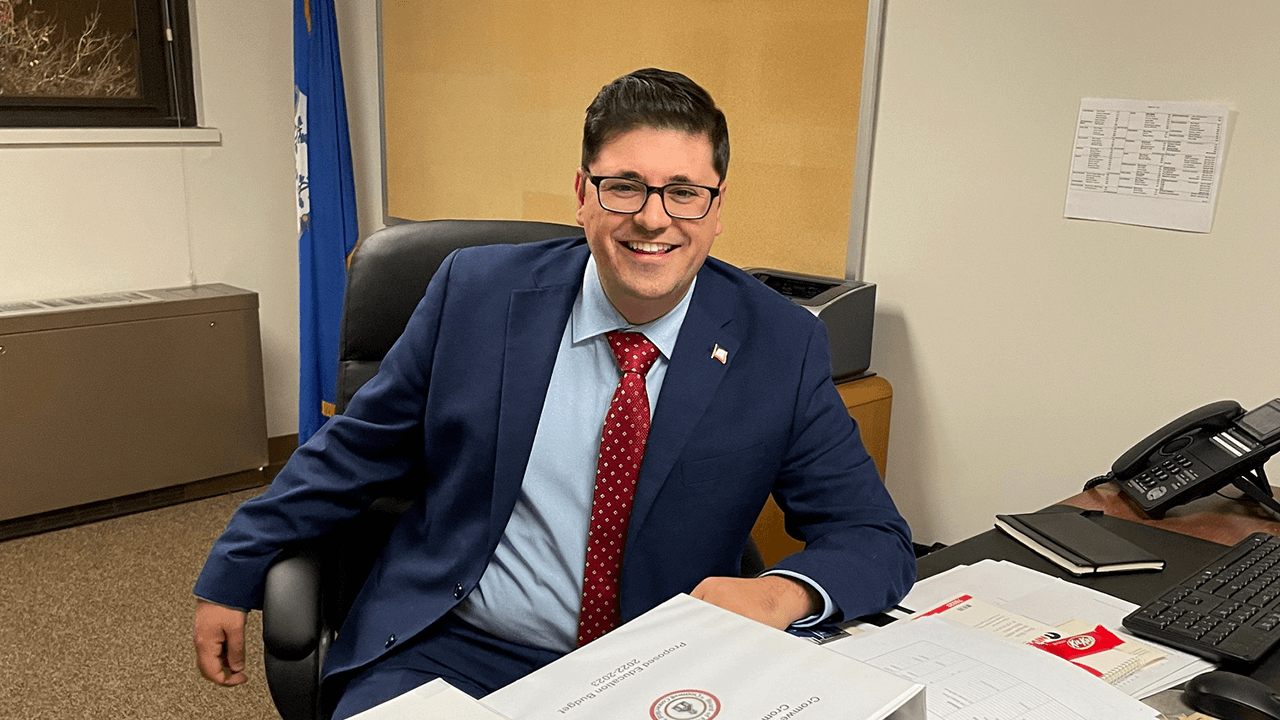
The publication also recognized Quinnipiac as a Leader in International Law, and Leader in Employment Law, with dual A- rankings. Quinnipiac also makes the list among preLaw’s “Top Schools for Salary versus Debt.”
Quinnipiac’s exceptional School of Law building on the North Haven Campus first opened to students in 2014, when the school moved from its former site on the Mount Carmel Campus. School of Law Dean Jennifer Brown said the facility’s intentional design was formulated with students in mind.
“This is a highly functional, very intentional space, where we’ve created spaces for students to do the kind of learning that we know is important for creating 21st-century lawyers,” said Brown.
Providing spaces for learning and leadership development also sets the building apart.
“When our students are on the executive boards of organizations, or editorial boards for journals, or they are leading the competition teams for mock trial, moot court, or the Society for Dispute Resolution, we give them office spaces where they can do that kind of work together and collaborate. I think that is a very important feature of the building,” said Brown.
Among many inspirational spaces are the school’s curricula-tailored classrooms, its 180-seat, two-tiered ceremonial courtroom and its impressive, cathedral-ceilinged law library offering extensive hours of operation.
“It’s not just that we’ve got a big, beautiful library and lots of different kinds of spaces in the library where students can study. It’s also that the library is open, so it’s accessible. That reflects a service mindset,” said Brown.
PreLaw’s call for national attention to the building echoes qualities that have been recognized for many years by members of the academic and professional legal world who have had the opportunity to fully appreciate the facility’s virtues.
“For the last decade, we’ve lived in this building and we know how beautiful it is. We hear that from so many people who visit us and students who join us and members of the bar who choose to hold their conferences, symposia and trainings in our building,” said Brown.
The school’s top ranking by preLaw as a Leader in Employment Law supports the many effective experiences offered in the study of workplace law at Quinnipiac. Among the exceptional valuable assets available for students are Quinnipiac’s employment and labor externship program; its Center on Dispute Resolution training and exposure to the Quinnipiac/Yale Workshop on Dispute Resolution; and its Civil Justice Clinic. The clinic gives students the opportunity to help clients resolve real-world employment issues that arise in the workplace.
“That is very practice-oriented and practical legal education in the area of employment law,” said Brown.
PreLaw’s accolade recognizing Quinnipiac School of Law as a Leader in International Law is reflective of the immersive opportunities for experiential learning offered to law students, said Brown.
Students can travel to study in Ireland, or travel to England to participate in the Oxford Consortium of Human Rights. They can study complicated issues concerning Guatemala for a semester, then travel to Guatemala to talk to lawyers, human rights activists and people who are working with indigenous people.
“They are studying within an international sphere, in international settings where they are getting hands-on experience understanding an issue with global consequences,” said Brown. “It really brings home to students that, when you engage internationally, it has to be a much deeper, more contextualized analysis.”
The value of a Quinnipiac law education also comes through in preLaw’s ranking of the School of Law among the nation’s top schools for salary versus debt.
“To learn the salary to debt ratio is favorable for us, compared to a lot of the other law schools, is really gratifying,” said Brown. “That suggests we are being appropriately generous in our allocation of financial aid and scholarships and we are doing the best we can to hold down tuition costs and that our students are finding gainful employment that is providing a reasonable return on investment.”
In this Article
Stay in the Loop
Quinnipiac Today is your source for what's happening throughout #BobcatNation. Sign up for our weekly email newsletter to be among the first to know about news, events and members of our Bobcat family who are making a positive difference in our world.
Sign Up Now